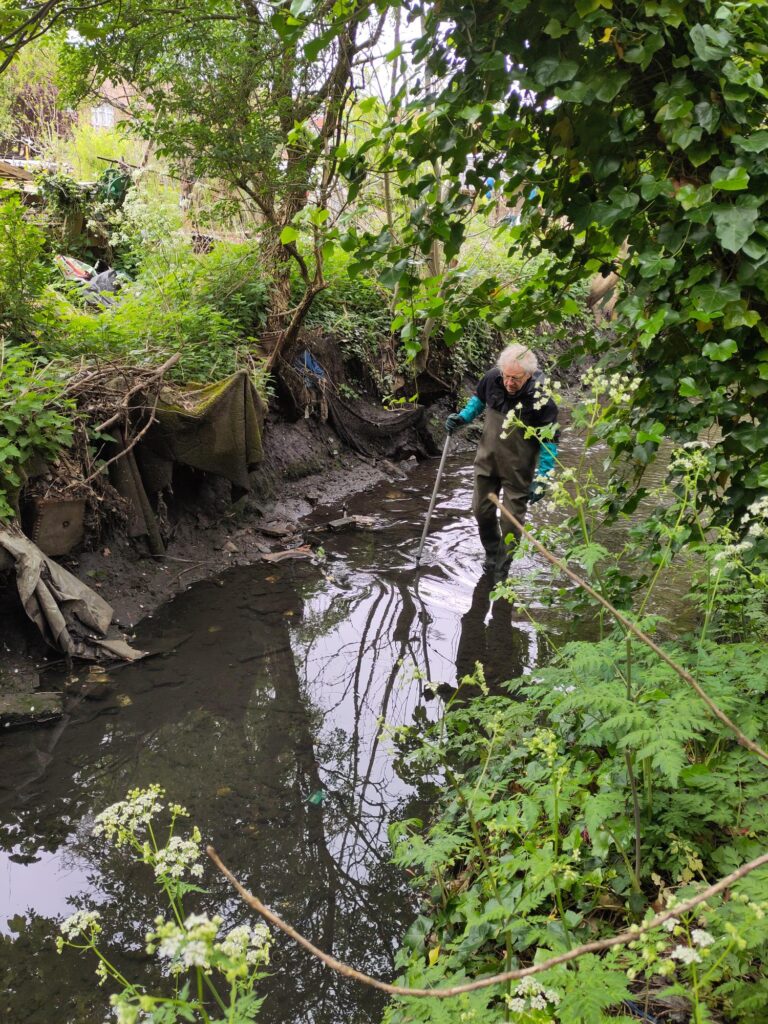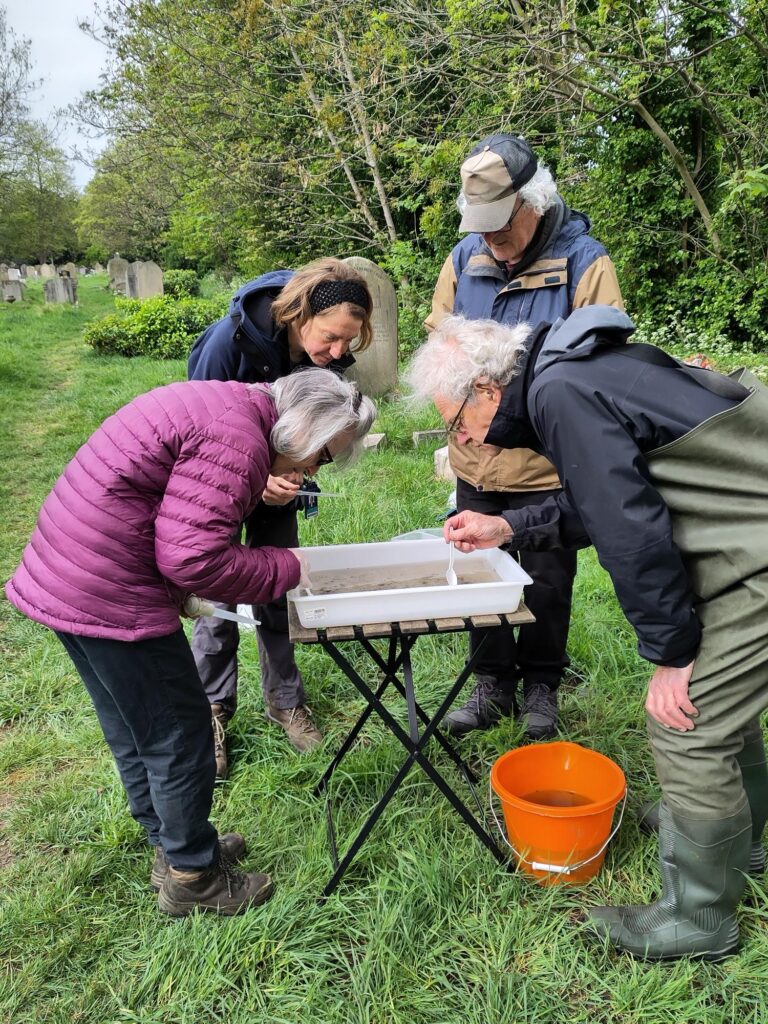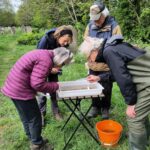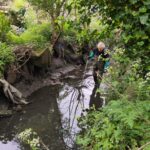Once a month you might be puzzled by seeing a group of people in the cemetery huddled round a picnic table peering intently into a plastic tray full of river water!
This is citizen science at work. Haringey has a group of volunteers who work on water quality in the borough – the Water Squad, led by John Miles. The Moselle Brook runs through the cemetery and for the past year the Water Squad, in collaboration with Thames21 has been monitoring the quality and inhabitants of the river.
Thames21 is a charity that connects people to nature by helping them enjoy, protect and enhance their local rivers. The Moselle Brook is Haringey’s very own river. It rises in Queen’s Wood in the west of the borough and runs to the river Lea in the east. It flows largely underground, but comes to the surface in Lordship Rec and Tottenham Cemetery.
Each month the Squad measure the levels of ammonia and nitrates in the water and assesses the general state of the water course. It also takes a sample of the gravel at the bed of the brook and searches for evidence of riverfly larvae.
The term riverflies is used to designate predominantly caddisflies, mayflies, and stoneflies. These are invertebrates that spend most of their life cycle in freshwater habitats – rivers, streams, ponds, or lakes and don’t roam far from their place of origin. They lay their eggs in water and when they hatch the larvae live and grow in the water until they reach maturity and become winged insects. There are more than 270 species of riverfly in the UK, eight of which have Biodiversity Action Plan status, meaning they’re recognised as of priority for conservation by the government.

Riverflies form the basis of many food chains as an important food source for fish, birds, and mammals, so any changes in their numbers directly impact the whole ecosystem. By feeding on organic matter, these invertebrates also help to keep the water clean. Due to their sensitivity to environmental change, which makes them great indicators of the health of a river, riverflies are known as the ‘canaries of our rivers’. The key factors that can affect their populations are water quality, habitat availability and water flow.
So the monthly monitoring makes a record of the creatures living in the brook, but so far no riverflies. However, there are creatures living in the brook – freshwater snails, midge larvae and hog lice. All the data is logged on a Thames21 database so that there is a proper ongoing record of the health of the Moselle Brook.





